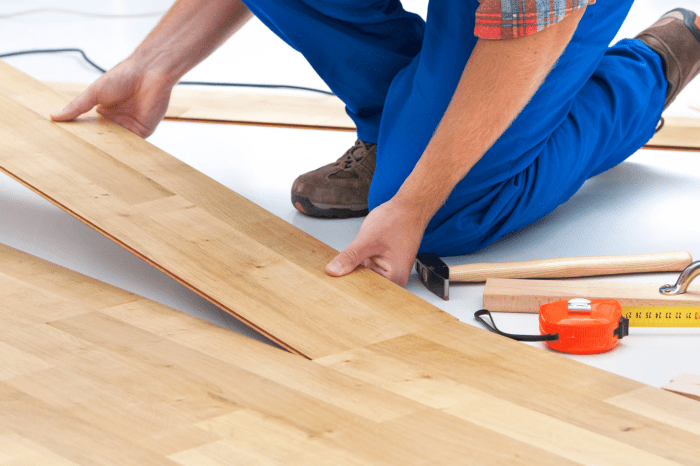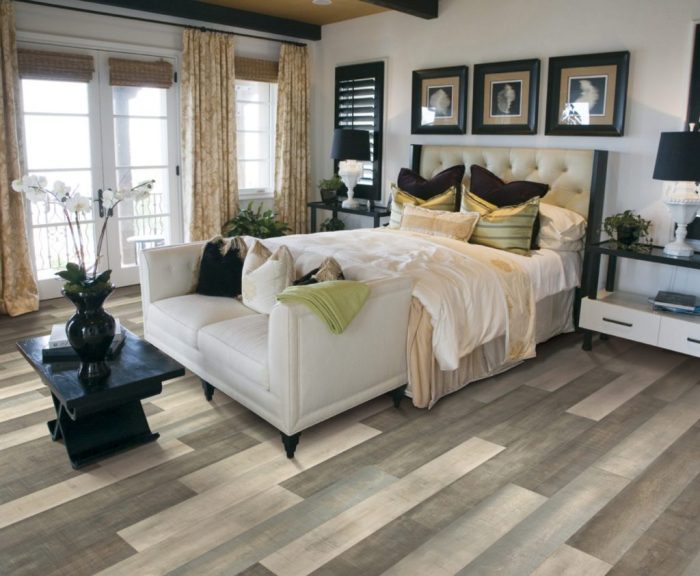Low-cost flooring installation options in my vicinity offer a variety of affordable choices to enhance your living space. From budget-friendly materials to expert installation tips, this guide has everything you need to know.
Explore the different types of low-cost flooring options, factors that influence installation costs, local suppliers, and whether DIY or professional installation is the right choice for you.
Types of low-cost flooring options
When looking for budget-friendly flooring options, there are several materials to consider. Each type has its own advantages and drawbacks that should be taken into account before making a decision.
Vinyl Flooring, Low-cost flooring installation options in my vicinity
Vinyl flooring is a popular choice for those on a budget. It is affordable, durable, and easy to maintain. However, it may not be as luxurious or long-lasting as other options. Vinyl is commonly used in kitchens, bathrooms, and basements due to its water resistance.
Laminate Flooring
Laminate flooring is another cost-effective option that mimics the look of hardwood or tile. It is easy to install and clean, but may not hold up as well in high-traffic areas. Laminate is often used in living rooms, bedrooms, and dining rooms for a budget-friendly upgrade.
Ceramic Tile
Ceramic tile is a durable and versatile option that comes in a variety of colors and designs. While it can be affordable, the installation costs may add up. Ceramic tile is commonly found in bathrooms, kitchens, and entryways for a stylish and practical flooring solution.
Carpet Tiles
Carpet tiles are a cost-effective alternative to traditional carpeting. They are easy to install and replace, making them ideal for high-traffic areas. However, they may not provide the same level of comfort or insulation as wall-to-wall carpet. Carpet tiles are commonly used in offices, playrooms, and basements for a budget-friendly flooring option.
Factors influencing the cost of flooring installation

When it comes to the cost of flooring installation, several factors can influence the overall price. Understanding these factors can help you make informed decisions when choosing the right flooring option for your space.Area size:The size of the area to be covered with flooring is a significant factor that impacts the installation cost. Larger areas will naturally require more materials and labor, leading to higher overall costs.
Conversely, smaller spaces will be more affordable to install new flooring.Choice of material:The type of flooring material you choose can also greatly affect the installation cost. For example, hardwood flooring tends to be more expensive to install compared to laminate or vinyl flooring. High-end materials like marble or natural stone will also come with a higher price tag for installation.Additional costs:In addition to the basic cost of materials and labor, there are often additional costs associated with flooring installation.
This includes the removal of existing flooring, which can be a labor-intensive process depending on the type of material being removed. Subfloor preparation is another potential cost factor, as a damaged or uneven subfloor may need to be repaired before new flooring can be installed.
Removal of existing flooring
When replacing old flooring, the cost of removing the existing material should be factored into the overall budget. This process can vary in complexity and cost depending on the type of flooring being removed. For example, removing carpet may be easier and less expensive than removing tile or hardwood.
Subfloor preparation
Ensuring that the subfloor is in good condition and properly prepared for new flooring is crucial for a successful installation. Costs related to subfloor preparation can include repairs, leveling, or moisture barriers. Neglecting this step can lead to issues down the line and may result in additional expenses for repairs or replacements.
Local suppliers and availability

When looking for low-cost flooring materials in your vicinity, it’s essential to identify local stores or suppliers that offer affordable options. By doing so, you can save money on both materials and installation costs. Here are some tips on finding the best deals on flooring in your area.
Local Stores Offering Low-Cost Flooring Materials
- Visit local hardware stores or home improvement centers that often have a selection of budget-friendly flooring materials.
- Check out discount stores or outlets that specialize in selling surplus or discontinued flooring options at a lower price.
- Explore online marketplaces where you can find local suppliers or individuals selling new or gently used flooring materials at a discount.
Availability of Low-Cost Flooring Materials
- Call ahead to local stores to inquire about the availability of the specific type of flooring material you are looking for.
- Check if the store offers delivery options or if you need to arrange for pick-up yourself.
- Consider the lead time for ordering certain materials if they are not readily available in-store.
Tips for Finding the Best Deals on Flooring
- Sign up for newsletters or loyalty programs at local stores to receive notifications about sales or discounts on flooring materials.
- Compare prices and quality across different stores to ensure you are getting the best value for your money.
- Ask about any ongoing promotions or clearance sales that may offer additional savings on flooring materials.
DIY vs. professional installation: Low-cost Flooring Installation Options In My Vicinity
When deciding between DIY installation and hiring professionals for your flooring project, it’s crucial to weigh the costs and benefits associated with each option. While DIY installation can save you money, it also comes with risks and challenges that may end up costing you more in the long run.
Cost and Benefits Comparison
- Hiring professionals ensures a high-quality installation that is done efficiently and correctly, reducing the risk of mistakes or damage to the flooring materials.
- DIY installation can be more cost-effective, as you can avoid labor costs associated with hiring professionals. However, it requires time, effort, and skill to complete the project successfully.
- Consider the value of your time and the potential savings or added costs that may arise from DIY installation before making a decision.
Step-by-step DIY Installation Guide
- Prepare the subfloor by cleaning and leveling it to ensure a smooth surface for the new flooring.
- Acclimate the flooring materials to the room’s temperature and humidity for at least 48 hours before installation.
- Begin laying the flooring from one corner of the room, following the manufacturer’s instructions for the specific type of flooring you are installing.
- Use appropriate tools, such as a saw, hammer, and spacers, to cut and fit the flooring pieces together securely.
- Finish the installation by adding trim pieces, transitions, and sealants as needed to complete the look and ensure durability.
Risks and Challenges of DIY Installation
- Incorrect installation can lead to gaps, uneven surfaces, or damage to the flooring material, requiring costly repairs or replacement.
- Lack of experience or skill in flooring installation may result in subpar results that affect the overall look and functionality of the floor.
- DIY installation can be time-consuming and physically demanding, especially for larger or more complex flooring projects.
Closing Notes
In conclusion, low-cost flooring installation options in your vicinity provide a cost-effective way to upgrade your home’s aesthetic appeal. With the right materials and guidance, you can achieve a beautiful look without breaking the bank.